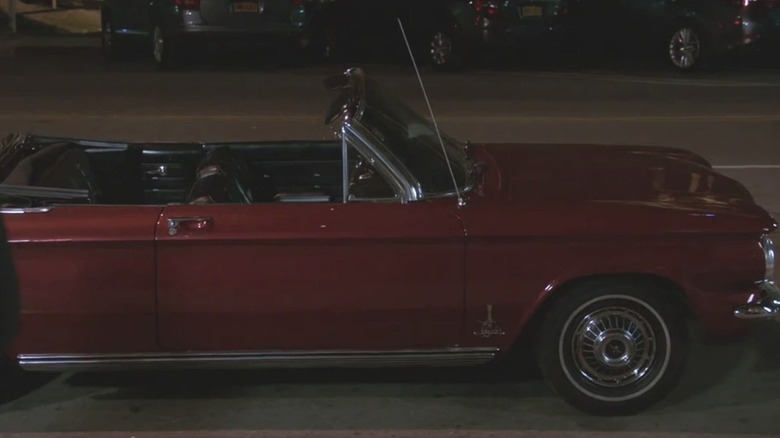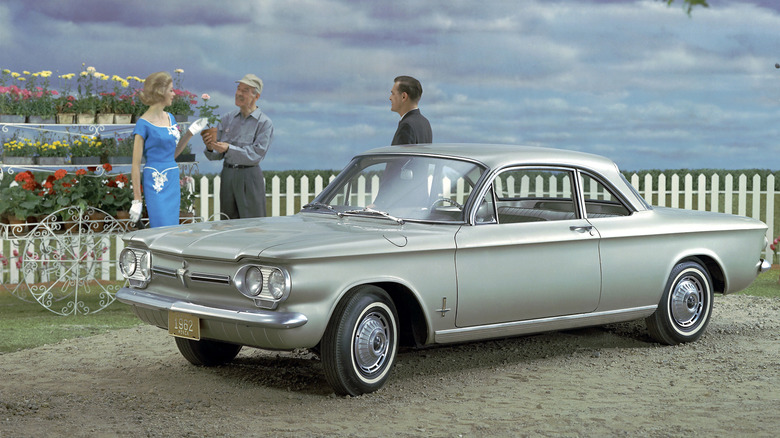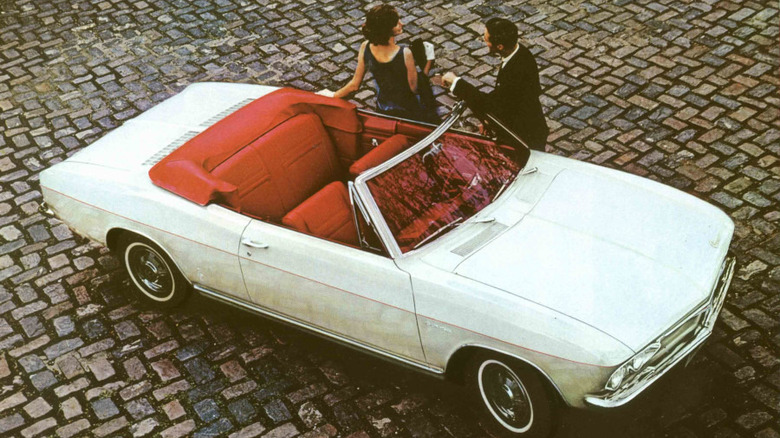1963 Chevrolet Corvair Monza Spyder: A Look At The Vehicle Andre Braugher Drove In 'Brooklyn Nine-Nine'
Last week was a sad one for "Brooklyn Nine-Nine" fans, who learned about the unexpected passing of Andre Braugher, the beloved actor who played the role of Captain Raymon Holt in the series. Holt was a complex character with many quirks, one of which was his choice of classic car, a red 1963 Chevrolet Corvair Monza Spyder lovingly dubbed "Gertie."
In the series, Captain Holt appears to be hugely enamored with his drop-top Corvair, which he defends on every occasion, even though he is repeatedly told that it's not an especially valuable classic. But the captain never gives up on his beloved Gertie, even when it is stolen at one point in the show, and the main characters have to infiltrate a gang of high-level car thieves to get it back.
Holt's love for Gertie is at odds with his very serious and formal character, but it does show he has a soft side, and the Corvair Monza Spyder is the kind of car that could have that effect on an enthusiast. Even though back when it was new, it was deemed "Unsafe at Any Speed" in the 1965 book by Ralph Nader, today, Corvairs aren't seen as being that dangerous to drive, and those who love them will jump to defend them against any negative comments, much like Captain Holt did on Brooklyn Nine-Nine.
Why the Corvair Got a Bad Rap
The Chevy Corvair was the closest thing America ever came to producing something similar to a Porsche 911—a car with its engine sticking out over the rear axle. It is one of the few rear-engined American cars, and its engine placement contributed to its negative handling image, as it made the car want to oversteer around corners.
The first generation of the model, built between 1960 and 1964, also had an early independent rear suspension system called Quadri-Flex, a type of swing axle suspension. This was considered a packaging miracle back in the day because the engine, transmission, rear axle, and suspension are all one unit, making it relatively easy to drop the engine.
One big drawback of the swing axle suspension is the fact that the inner wheels tend to go under the car under hard cornering, and when the driver turns hard in one direction and then quickly the other way, the car will exhibit some interesting handling characteristics. However, as many have proven since Ralph Nader's book was published, the risk of a first-gen Corvair flipping during hard cornering is minimal.
Even though the toe of the rear wheels under hard cornering might look scary in a first-gen Corvair, all it will do is allow the rear end to break loose and give the car quite a tail-happy feel. The inner rear wheel might also lift off the ground and skip a little bit, but unless it catches on something, the chance of the car landing on its roof isn't any greater than in a comparable front-engined car of the era.
What Made the Corvair Monza Spyder Special?
The Corvair Monza Spyder was launched as a sportier version of the coupe and convertible modes. Chevrolet built 39,808 Spyders over a three-year production span between 1962 and 1965. For the first two years, Monza Spyder was offered as an optional pack for the coupe and convertible body styles, whose biggest draw was that it gave you access to a 150-horsepower turbocharged version of the flat-six engine (which made under 80 or 110 horsepower in naturally aspirated guise).
It was the second turbocharged production vehicle ever, arriving a few months after the first, the 1962 Oldsmobile Jetfire. However, given its unique horizontally opposed engine configuration, the turbo version of the Corvair made quite a unique and very Porsche-like noise from its six-cylinder engine, and, to this day, no other American car sounds like it.
The best version of the Corvair to enjoy the special exhaust note is, of course, in a convertible like Gertie from "Brooklyn Nine-Nine."
Spyders also came with a 120 mph speedometer instead of the one graded to 100 mph that lesser versions had, a tachometer (also absent in lesser versions), flamboyant Spyder logos on the front fenders, and unique logos depicting a spider on the hubcaps. Being an early turbocharged car, the Corvair Monza Spyder is known to have suffered from turbo lag; it had a narrow power band, and you couldn't rev it past 5,000 rpm, so you often had to go for a lower gear to maintain acceleration.


